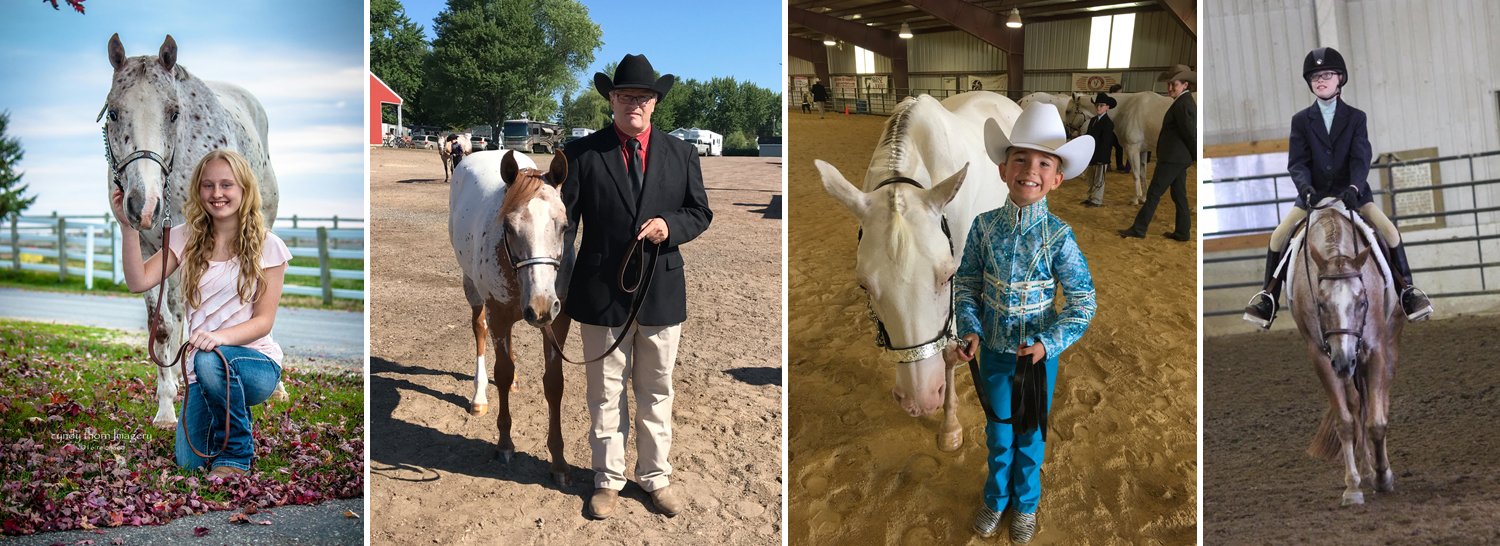
Brief History of the Club
In April of 1960, Shirley Rice of Oconomowoc, WI sent letters 26 to prospective members of the National Pony of the Americas Club, asking who would like to have a state club. This first meeting of WPOAC was held at the Plymouth, WI fairgrounds along with a pony auction also being held there.
Mr. Harold Robinson of Watertown brought his beautiful POA stud “GR’s Lucky T-293” to the meeting and showed him to the crowd in the sale ring while the auctioneer gave all the information on the POA’s including color, size and National office address. The 13 original members included: Mr. Harold J. Robinson, Pres.; Mr. Art Schonfeldt, Vice Pres.; and Mrs. Shirley Rice, Sec./Treas.
The first three years of existence for WPOAC were full of challenge, hope, and dreams and at the end of that time they had put on POA and open shows, a futurity, contacted 4-H clubs, advertised the POA every way possible and set up a News Bulletin (first elected editor was Mrs. Donald Beeck).
The WPOAC has grown to over 100 members and now hosts 5-6 two day shows each year. Our members are active in state and national leadership positions and are highly ranked in the national standings.
About the Breed
In 1954, Les Boomhower was a Shetland pony breeder and a lawyer with his own practice in Mason City, Iowa. A neighbor offered Les an Arab/Appaloosa mare who had been bred to a Shetland stallion. She was due to foal that spring. Les waited until the foal was born before he bought the mare. The little colt born of this union was white with what looked like black paint smears all over his body.
What intrigued Les the most were the spots on the colt’s flank that formed a definite black hand. Another idea was forming in Les’ mind as he watched the colt he named Black Hand. He called his Shetland breeder friends to his Memory Lane Ranch to discuss his idea, and the Pony Of the Americas Club was born. Les’ expertise in the law set up a solid foundation for this new breed registry.
The standards Les and his friends set up were a real challenge to any breeder. To be registered as a POA, strict guidelines were followed. The pony had to be between the height limits of 44 inches to 52 inches. The head was to be small and dished as the Arab; the body was to be muscled as the Quarter Horse; and the coloring had to be Appaloosa, visible at 40 feet. This was to be a breed for children to ride and show. Adults could only show the animals at halter or with a cart. So, these equines must also be gentle and easy to train.
From the original national POA Club came state clubs, state shows, regional shows and sales, a world class international show and sale and a world championship show. The registry went from Black Hand POA #1 in 1954 to 1996’s registry of over 40,000. The height limit of the breed increased to 46 inches and 54 inches in 1963. It was about this time the Shetland began to disappear from the POA breeding program. Larger ponies like the Welsh and small horses like the wild mustang and the Arab were combined with Indian ponies, Quarter Horses and Appaloosas by the breeders to achieve that “little horse” look. The membership voted in 1985 to again raise the upper height limit to 56 inches beginning in 1986. The age limit of a child showing went from age 16 in 1954 to 18 in 1973. In 1987, 19 and overriding classes were added with a limitation for the POAs under saddle to be only 2-, 3-, and 4-year-olds in training. In 1988, the first national POA Convention was held. In 1990, a Hall of Fame for POAs and POA members was begun.
Besides the usual high point standings, the breed added Register of Merit Awards for halter, performance and gaming. A POA earning all three receives the highest of all awards, Supreme Champion. The first Supreme Champion mare was GR’s Siri Raindrop. The first Supreme Champion stallion was Chief Little Britches, and the first Supreme Champion gelding was Cindy’s Fury. Breeders whose POAs receive a number of these outstanding awards can earn Bronze, Silver, Golden, and Diamond Premier Breeder Awards. A mare and stallion can earn Premier and Golden Premier status when a number of their offspring have achieved Supreme Champion. Futurities also offer monetary and prestige rewards for the breeders.
These gentle child-size equines can give a boy or girl confidence and responsibility which will serve in later life. The POA motto is “Try hard, win humbly, lose gracefully and, if you must … protest with dignity.” This perhaps more than anything else, sets POA exhibitors apart from others in the world of horse show competition. Boys and girls cheer for each other even though they are competing against each other. Deep friendships are made that last entire lifetimes for both parents and children from coast to coast. POAs are perfect for trail and endurance riding, ranch work and hunting. The gentle disposition, durability and intelligence of the breed serves it well.
